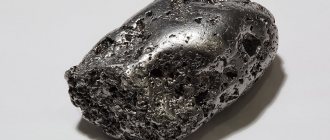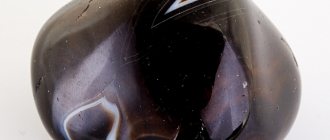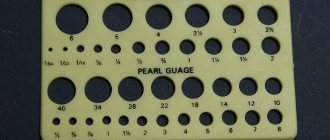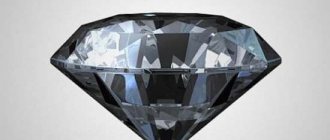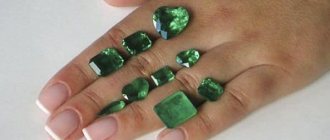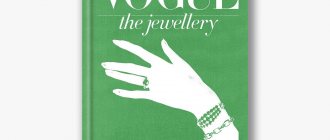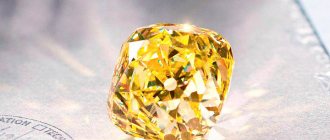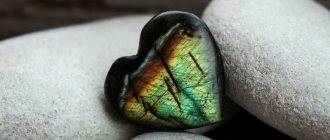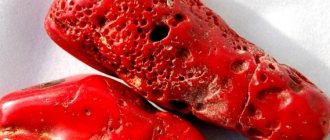Graff chasing the light
Today, the Graff name is synonymous with the world's finest yellow diamonds. With the help of 3 diamond industry experts, Maria Doulton tells us about the amazing journey diamonds go through to transform from rare, rough stones into brilliant jewelry.
If we talk about stones that bring joy, then the yellow diamond will easily take first place among them. On the cloudiest days, the golden light from the perfect yellow stone will create an atmosphere of well-being that is similar to the feeling of warmth from the summer afternoon haze. Doesn't a yellow diamond, this fragment of sunlight, forever enclosed in a practically indestructible mineral, born in the mysterious depths of our planet, contradict the world order?
Science tells us otherwise. A much less romantic element, nitrogen, separated the colorless diamond from its bright yellow cousin billions of years ago.
Yellow is the only color diamond whose grading begins at the lower end of the GIA color scale from D to Z and continues into Fancy hues, giving yellow the widest and most amazing range of options.
The most valuable are the four Fancy types: from Low Fancy to High Fancy, which is at the very top of the range due to its ideal combination of color and saturation.
By the time diamonds were discovered in South Africa in the second half of the 19th century, several yellow diamonds had already been found. Those found in India and Brazil were considered natural wonders worthy of cabinets of curiosities and royal collections.
But today, yellow diamonds are one of the most sought-after gemstones. And that's thanks in large part to four decades of work by Lawrence Graff. He was one of the first to bring attention to Fancy Yellow diamonds at a time when only white diamonds were popular.
Lawrence Graff remembers the moment in the 1970s when a diamond cutter in New York showed him a 31-carat yellow diamond. He was stunned by how the Radiant cut brought out his color to the fullest. Following his heart, he bought this stone. And we can say that from that moment he became seriously ill with yellow fever.
It wasn't long before he acquired and cut his first deep yellow diamond, the 47.39-carat Star of Bombay, and then nearly two dozen more outstanding yellow diamonds that are among the finest of their kind in the entire world.
“Yellow diamonds are one of the most sought-after gemstones today, thanks in no small part to Lawrence Graff’s four decades of work.”
Ever the innovator, Graff developed innovative methods to find the cut shapes that best bring out the color of a diamond.
Every few years, a new record-breaking yellow diamond appears on the horizon, and soon Graff discovers another famous yellow stone: the 709-carat Peace Diamond. In addition to the ideal Bright Fancy Yellow, there is also a growing interest in more unusual shades, from Brownish Yellow to Rich Fancy Orange Yellow. But no matter which of these yellow diamonds you choose, it will never lose its ability to radiate a bright and cheerful glow.
As the former Head of Geology at the Natural History Museum London and now Chief Executive of the Gemological Association of Great Britain, I look at diamonds from a scientist's point of view. And yellow diamonds have a special appeal. The British Museum has numerous collections of white diamonds, but it is the colored diamonds that catch your attention. You just don't see them as often since only one in 10,000 diamonds found have color.
Considering that colorless diamonds are almost uniform, I am fascinated by the reasons why color appears in diamonds, since each of them has its own unique history: including boron inclusions in blue diamonds, nitrogen impurities in yellow diamonds, and deformation of the molecular lattice , giving pink shades to pink stones.
Each shade of color has its own history, which began in the earth billions of years ago. From its pristine appearance to its optical effects to its final color as a result of being cut by a master, a colored diamond has perhaps one of the longest and most amazing journeys of any object on earth.
The vast majority of diamonds, including yellow ones, were formed deep within the earth, at depths typically greater than 140 km, about three billion years ago. There, in a relatively rigid part of the mantle, under the influence of high pressures and temperatures, carbon turns into diamond.
However, in the case of yellow diamond, the key difference is the presence of nitrogen in its structure. This causes the diamond to absorb light in the blue region of the visible spectrum, resulting in the yellow color we see.
"Yellow Diamond is a window into the 'behind the scenes' of our planet."
Vividly fancy in relation to yellow diamond is a light to medium toned color. It should not be too dark and have very high saturation or color strength.
In this category, deep yellow shows the best effect, making it the most desirable shade of color. But since beauty is in the eye of the beholder, other shades and colors can be no less pleasant.
In addition to its attractiveness, the yellow diamond is a window into the “behind the scenes” of our planet. While a jeweler seeks perfection, I, as a scientist, am interested in imperfections.
Each captured particle can tell us what minerals are forming deep within the planet. This helps to understand our earth, and even assess whether there may be diamonds on other planets.
And remember, because we live on a dynamic planet, diamonds are still forming under our feet that may take millions of years to see the light of day.
Polishing a yellow diamond involves preserving the color within the stone and bringing it from the bottom to the top of the diamond. The color should reflect off the very top edge and not show through, which is exactly the opposite of what a polisher strives for in a colorless diamond. This is a skill that can only be mastered by a master cutter with at least 10 years of experience. You may have noticed that colored diamonds often have a cut that is different from their colorless counterparts because it also helps retain the color in the diamond. This is why most yellow diamonds are modified Oval, Cushion or Pear cuts, in which the bottom edges and angles are angled or modified to increase the intensity of the color. For the same reason, it is rare to see a yellow round diamond with a deep pavilion, resulting in dilution of color.
Bent over a cutting wheel, the only thing you can rely on is your eyes and some basic tools, and we really have to look for color. Each stone is unique and is a research project in itself.
About six weeks of the total three-month process are required to polish a yellow diamond. But polishing a large diamond can take a year or more.
We move very slowly and gently because yellow diamonds have a more stressed structure than colorless diamonds due to their crystallization process, which in turn means they react differently to the disc.
It is also important to consider the origin of a colored diamond, as geological differences have different effects on the hue and intensity of the color, as well as how the diamond reacts to the polishing process.
An experienced cutter can look at a rough diamond and judge what the final color will be. It all depends on experience, as often we look at diamonds at auction and cannot see right through them. But even in this case, we can fairly accurately assess the intensity and purity of the color.
Once a yellow diamond is in our possession, we strive to take the color up a level from, say, Intense Fancy to Vivid Fancy, but this is always a gamble, not an exact science. Within each color range there are many subtle shades and degrees of intensity, so it's about finding the most beautiful cut for each stone.
This is the ancient art of polishing that only experience can teach.
The range of yellow diamonds I work with is exceptional in terms of colour, quality, cut and quantity. Few jewelers have such a luxurious range of yellows on hand, ranging from traditional shades from light to bright yellows to exceptional examples of other colors such as deep orange-yellow and brownish yellow.
Since we have many valuable diamonds, as well as some of the rarest ones in the world, the design of yellow diamond jewelry is often based on the stone. I don't come up with an idea first and then look for diamonds, but vice versa: I start with stones. And in our workshop, diamonds, as the embodiment of femininity, are always called feminine words.
It is very important to get to know the stone better, so I hold them in my hands every day. Our London workshop is north facing, providing ideal light for viewing diamonds. I spend a lot of time studying each one, even before my initial gouache sketches take shape.
With yellow diamonds in particular, I love making bracelets or watches that use more than one stone. These are not often seen as other designers simply don't have the same selection of yellow diamonds to create such great combinations.
When you see a bracelet or earrings made from dozens of yellow diamonds, their color is always so vibrant that they look almost unreal. There is an art to combining them, as you must ensure that the brightest diamonds, the most brilliant of all, do not outshine the rest.
“A ring is the best way to present a yellow diamond, through gestures you reveal its beauty from all sides.”
Unlike other jewelers, after the gold setting for the piece is made in our workshop, the piece is returned to my team and we begin adjusting the angle and height of each stone to achieve maximum harmony and beauty until we get it right.
We must be prepared to start from scratch if something is not perfect, as our goal is to achieve balance in the architecture of each piece of jewelry, which should be as natural as breathing.
We set yellow diamonds in yellow gold prongs and claws for the simple reason that it is less noticeable when looking at the stone, even if the rest of the jewel is white gold.
Yellow diamonds pair best with white diamonds, especially in necklaces or bracelets, as they intensify the colors.
An exceptional yellow diamond, in my opinion, should be set in a ring. If you use stones to create a design in a necklace, a ring is the best and easiest way to represent the stone.
And don’t forget that by putting jewelry on your hand, you share your stone through gestures, and with every movement you reveal the beauty of the yellow diamond from all sides.
(Visited 305 times, 1 visits today)
BLOG OF THE HOUSE “LOBORTAS”
British billionaire Laurence Graff, whom jewelry business connoisseurs call the new Harry Winston, is the last romantic, the maestro of the jewelry world, who, by his own admission, still freezes with delight at the sight of excellent stones. Lawrence Graff argues that diamonds are the smartest money-saving luxury, and his main problem is finding new stones for a repeat clientele, not new clients. So Graff stands in splendid isolation at the peak of the upper segment of the jewelry industry.
Laurence Graff
In his old age, Graff remains chairman of the board and director of Graff Diamonds International and has no plans to retire. Lawrence still goes to all important deals himself. And this incredible hard work is the secret of his success. Graff himself defines it this way: “Yes, Graff has a successful business, because I have excellent business skills, there is no doubt about that. What other salon can a customer walk into and see the brand owner behind the counter? The risky steps I took were often rewarded. But in addition to being a businessman, I am also an artist, a connoisseur of the finest gemstones in the world. Who is there more in me? These are two equal parts of the Graff enterprise.”
Graff Diamonds
In the hands of Lawrence Graff, the world's largest diamonds turn into jewelry that is simply embarrassing not to show off. His latest purchase of the 1,109-carat Lesedi La Rona diamond, in September this year for a record US$53 million, reflects well the atmosphere surrounding his business, which is in the most expensive segment of the jewelry industry. Also, according to a message from the Graff Diamonds International website, the company had previously purchased part of the Lesedi La Rona diamond - weighing 373 carats.
Diamond "Lesedi La Rona".
Laurence Graff is the best illustration of the English dream. Once 79-year-old Lawrence Graff cleaned toilets in London, and now he is the pride of the British Empire, the owner of a world-famous brand and 15 salons in the most expensive cities on the planet - from Monte Carlo and Dubai to Moscow and a personal fortune of more than four and a half billion dollars. Graff sells stones of unprecedented size and excellent quality, claiming that the average purchase price in its showrooms is four hundred thousand dollars. By this indicator, it easily beats such respected competitors as Cartier, Harry Winston, Van Cleef & Arpels and Tiffany.
Graff's family lived in Tsarist Russia. His grandparents, Jews by nationality, were forced to leave their native Kyiv after a wave of pogroms. Their grandson Lawrence was born in 1938 in the poor Stepney area of the proletarian East End of London, and knew little about the family's past: relatives preferred not to remember him. The earnings of his father, a tailor, Harry Graff, and his Romanian mother, a fellow emigrant who ran a tobacco shop, were not enough. Before going to war, Harry Graff managed to open a small confectionery shop next door to his house.
East End, London, mid-30s.
But Lawrence Graff decided on his future quite early: at the age of 14, in 1952, Lawrence did so poorly at school that his family demanded that he quit school and go to work. The future billionaire's first job was as an apprentice (which included cleaning floors and toilets) for jeweler Schindler in London's Hatton Garden, the historical center of the jewelry business. Lawrence only lasted three months before he was fired, but it was here that he first saw gems and realized what he wanted to do with his life. Soon Lawrence finds a new place of work, where he is trained in the selection of stones, their cutting, setting, polishing and working with gold; three years later he began restoring products, and then making jewelry.
When Lawrence turned eighteen, he convinced one of his older comrades to take him on as an apprentice in a new business. When their debts to suppliers exceeded six thousand dollars, Lawrence persuaded his senior partner to give him the debts along with the business. By 1960, having reached the age of 22, Lawrence was not afraid to start his own business, founding the Graff Diamonds company, and at 24 he already owned two small jewelry stores in London. However, Lawrence was never able to convince leading London jewelers to buy his professionally made but impersonal jewelry. And he set off. With $1,000 worth of jewelry in a black leather suitcase, Lawrence Graff showed up at the Robinson & Co shopping center in Singapore. Once he got comfortable, he began holding monthly exhibitions and sales there.
Laurence Graff on a yacht in Monaco in the 1970s, with a model wearing Graff jewelry.
It was in Singapore that he met his first important clients - the heir to a 20 billion fortune, Crown Prince Hassanal Bolkiah of Brunei and his wife, famous art and jewelry collectors, and literally became the court jeweler of this royal family, which acquired diamonds from Graff over twenty years for tens of millions of dollars. From 1966 to 1986, Graff visited Brunei at least once a month, was taken to the royal box for polo matches, and was given an Aston Martin to tour the country. Well, it goes without saying that on all such trips he was accompanied by a suitcase with diamond jewelry. In one of his rare interviews, Lawrence admitted that he owes his fortune to the Sultan of Brunei, and by the way, not only to him. Many wealthy people from India, Malaysia and China have chosen Graff jewelry.
Prince Hassan Bolkiah of Brunei
In 1966, for a bracelet with emeralds, diamonds and amethysts, Graff received the prestigious Diamond International Awards, the first of all its future ones. Soon Lawrence Graff became one of the largest buyers of diamonds - in the 70s and 80s of the last century, representatives of Diversity Jewelery Ltd came to him twice a week with a batch of diamonds, from which the jeweler selected the best stones, created jewelry and set off again with a suitcase whose contents were already worth millions. In the 1970s, Lawrence frequented the Middle East, where many oil millionaires emerged. The Arabs began to fly to London and waste oil money. Graff knows how to please the client. Lawrence becomes “one of our own” for this audience. “If they needed a doctor, I found a doctor. If you needed a car, I found it. The princesses of Saudi Arabia would go shopping and then come into my office to change clothes,” he recalls.
Lawrence Graff.
Graff will receive his first order from the hands of the British Queen Elizabeth II at thirty-five. Graff's entrepreneurial activities in the Middle East, Singapore, Malaysia, the Philippines, Australia, India, and later Hong Kong and Japan were so successful that in 1973 he became the first British jeweler to receive the Queen's Awards for Trade Development. Enterprise, and was awarded it three more times, in 1977, 1994 and 2006.
Laurence Graff with the Order of the British Queen.
In 1974, Graff opened a full-fledged store in London next to the Harrods department store, closing the existing two small salons. One day, without prior notice, the prince of Saudi Arabia, Turki ibn Faisal Al Saud, came into his store, as Graff recalls, “bought the entire assortment, including the largest of my diamonds, which was 14 carats.” By the early 1990s, when the oil money stopped flowing and the Sultan of Brunei cut back on his spending on jewelry, Graff decided to renovate his London salon. In 1993, Lawrence moved it to New Bond Street in Mayfair. The guest of honor at the opening of this very boutique will be Prince Michael of Kent.
Prince Michael of Kent and Igor Lobortas.
Graff's next step was to enter the American market, where half of all diamond jewelry in the world is sold. Competitors Cartier and Van Cleef & Arpels had already been purchased by the Richemont conglomerate. America's leading diamond brand, Harry Winston, was thrown into chaos following the founder's death in 1978 and subsequent legal battles between his sons Ronald and Bruce. “There was no one at the top of the pyramid. All our competitors neglected this market segment,” recalls Graff. Since 2001, Graff has opened salons in New York, Chicago, Las Vegas (in an establishment owned by gambling king Steve Wynn) and Florida. One of Lawrence's first clients is the eccentric American billionaire Donald Trump. Graff and Trump have a lot in common: both are charming and arrogant, rude, boastful and love everything big. It is not surprising that in 2004, for his third wife, Slovenian supermodel Melania, Trump ordered a 12-carat diamond engagement ring for one million dollars from Graff. “Lawrence is an outstanding jeweler,” Trump says. “The quality of his stones, level of service and reputation are beyond praise.”
Melania Trump
The most famous and largest diamonds in the world passed through the hands of Lawrence Graff, including Idol's Eye (71.21 carats), Hope of Africa (115.91 carats), Paragon (137.82 carats), The Star of America (100.57 carats) and Light of Letseng (102.79 carats). Today, the jeweler has one of the most impressive collections of precious stones in the world, which, according to experts, is worth one and a half billion dollars. Even the daring robbery of a boutique in London in 2009, when the criminals took away sixty-five million dollars worth of jewelry, was not a fatal blow for Graff.
Graff. London.
Lawrence still personally controls every aspect of his business, including marketing. He does not intend to sell the business or even a stake in it, although private investment funds are now actively investing in the British jewelry houses Garrard and Stephen Webster. The number of people with the surname Graff in business is also growing - the jeweler has already brought three members of his family into the company, including his son Francois, who now holds the second most important position in Graff Diamonds International. Graff said he will ultimately lead the company.
Laurence Graff with his son Francois
The empire created by Lawrence Graff is impressive. In addition to the fully private Graff Diamonds International, a vertically integrated company spanning the entire chain from mining and wholesale to cutting and retail, Graff owns a majority stake in the South African Diamond Corporation in South Africa, which mines, cuts and polishes diamonds and has offices and workshops in Johannesburg, Antwerp, Mauritius and Botswana. Also in South Africa, in Stellenbosch, Graff has Delaire Graff Estate - a wine farm, a hotel with a spa, a lion park and a crocodile farm. There are currently fifty-five boutiques selling Graff jewelry and watches around the world.
Graff Wine Farm Delaire Graff Estate.
Most of the time, the businessman lives in a mansion in Gstaad, in the Swiss Alps, with his French wife Anna-Marie and three children. In addition to the mansion, Graff owns real estate in Switzerland, as well as houses in London, Cap Ferrat in France and apartments in New York. The estimated value of his collection of modern paintings alone, which includes Picasso, Warhol and Basquiat, is more than $250 million. Graff travels between his many possessions on his own 45-meter Feadship yacht or on his personal Global Express XRS jet.
Lawrence Graff.
Particularly worthy of respect is the perseverance and determination with which Lawrence Graff, despite everything, walked firmly towards his intended goal, sometimes stumbling and falling, but getting up again, led by his unshakable faith in himself and in the future. “Diamonds survive generations. But the best moment in their destiny is when they turn into jewelry. They should be on display, like a work of art, and not hidden in a safe.” Lawrence Graff.
Lawrence Graff.
Among the works of the Lobortas House are internationally recognized standards of jewelry craftsmanship of the 21st century, including the “Swan Princess” ring with 2,525 diamonds, which became a world record and is listed in the Guinness Book of Records, created using an innovative, super-new diamond-setting technique.
Original design, high quality and exquisite workmanship characterize each product of the Lobortas House, turning them into masterpieces of jewelry art, for people who are accustomed to always being the first in everything.
Diamond world record “Swan Princess”. Lobortas House Gold, 2525 diamonds.
Laurence Graff Jewelry
Laurence Graff became famous for his ability not only to create luxurious jewelry, but also for his ability to find and acquire wonderful gemstones. He is considered one of the most competent dealers in the world market of precious stones - diamonds. Graff Jewelry has a reputation for being a source of rare and unique stones. Among the acquired treasures there are those that are recognized throughout the world as the rarest and most beautiful stones - the famous Mogok ruby, the Eye of the Idol - one of the largest blue diamonds, yellow Windsor diamonds and many others, which have captivated the whole world of jewelry connoisseurs and admirers with their beauty. art.
Photos taken from graffdiamonds.com
And it didn’t all start out easy. A descendant of emigrants from Kyiv, Laurence Graff was born in 1938. The parents of the future jeweler fled from Jewish pogroms to England, where Lawrence was born in a working-class London neighborhood. At the age of 15, he tried to learn jewelry making, but somehow the inclinations of skill did not immediately appear in him, and the owners of the jewelry workshop refused to teach the foolish boy. And at the age of 18, the enterprising Lawrence opened his own business - he himself began to create his own jewelry, still with semi-precious stones. He sold some things successfully, but others were waiting in the wings for a long time. But the debts grew.
Then Lawrence took his small suitcase, in which he put samples of his products, and went around the cities of Great Britain. He offered many store owners to place orders. Lawrence Graff had no training in gemology or design, but he had the desire to work and become a true gemstone connoisseur.
It took years to learn to understand the variety of amazing stones and their various shades. He managed to navigate the world of stones. One day he borrowed 33 small diamonds and made a ring. Lawrence sold this ring to the owner of a jewelery shop in Blackpool. And here's the luck - the ring was soon sold, and the store owner ordered another one. Lawrence borrowed the diamonds again, and sold the ring again. Then he began to create jewelry, combining diamonds with sapphires, emeralds, and rubies.
Soon Graff opened two jewelry stores in London. Laurence Graff thought that he had reached the point where the best jewelry houses would become interested in him and would approach him with proposals. But no, that didn't happen. Then he again collected the samples in his suitcase and went to Southeast Asia. In Singapore, they took all his jewelry and even ordered new ones. So Graff, traveling around Asia, found more and more new clients, among whom important people began to appear, and even the Sultan of Brunei. But not only did Graff acquire clients, but also stones of rare beauty appeared in his collection.
The stones gradually became larger and rarer. In the 70s, he and his suitcase traveled throughout the Middle East. When Graff returned to Europe, he opened a boutique in Knightsbridge. Now he occasionally traveled with his suitcase, and mainly to the Sultan of Brunei, continuing to buy the rarest and most beautiful stones. Finding unusual pebbles of different colors and using their diversity became a passion for him. In 1993, the Graff boutique on New Bondstreet was opened by Prince Michael of Kent. Now Graff jewelry stores are located in many countries around the world.
Graff covers the widest range of diamond colors - yellow, orange, brown, green, blue and even pink and red from the shores of Australia. In all truly significant products, the chosen stone is always displayed in the most prominent place. And although now the company’s agents are mainly busy searching for interesting and high-quality stones, Lawrence Graff is ready at any moment to take off and go to any country where a stone of unique beauty awaits him.

